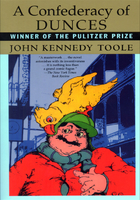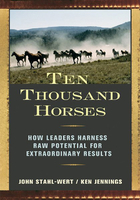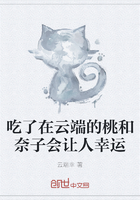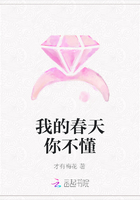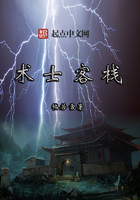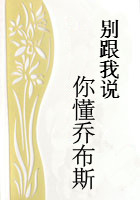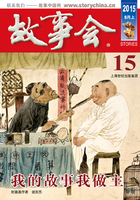The Lesson: We all strive to have our wardrobe fit us like a glove. Due to our unique proportions and the vagaries of sizing, it sometimes seems the best we'll be able to achieve is finding clothing that fits like a mitten. In this chapter we'll discuss how to best dress a host of body types and why exactly you can wear a size 2 at Banana Republic, while you fit quite nicely into Aunt Elise's vintage 14s. It isn't magic, it isn't the South Beach Diet; in fact, it isn't even important. This chapter is about finding a great fit, not a number on a tag. Read on.
"She wears her clothes as if
they were thrown on her with a pitchfork."
-Jonathan Swift
THE CHALLENGE OF A GOOD FIT
Among the most easily resolved of the fashion foibles is fit. Surely we all agree that pants should not pool around our shoes, nor should jackets keep us from moving our arms. And yet, multitudes wear clothes that are too big or too small. When they ask, "How do I look?" we're much more inclined to respond, "Like a sack of potatoes" or "Like you're wearing a sausage casing."
These people are being done in by fit. Keep in mind that this is not an issue of size, as in your size. This is an issue of the size and shape of your garments and whether they work to accentuate "all the things you are." That phrase is cribbed, of course, from Oscar Hammerstein II and Jerome Kern, two men of very different physical proportions-Oscar was tall and robust, Jerome was not-who both managed to look good while writing some truly wonderful songs. Despite the genius of their artistic partnership, Oscar would have looked ridiculous in one of Jerome's suits, and vice versa. Yet every day, the equivalent takes place: Hammersteins wake up and try to wedge themselves in Kern clothes, and the Kerns assume they can roll up the sleeves of that sweater that is too big but was on sale.
Furthermore, some larger Hammersteins-i.e., plus-size women and men-hold on to the mythology that larger-size clothes conceal weight and girth. They don't. They accentuate it. Witness the muumuu, that dress-meup look from the '70s that was all the rage for cocktail attire from poolside to penthouse. We won't assail its comfort, but it made even petite women look like floats in a parade. Surely the muumuu is just a tattersall away from a housedress (think Shirley Booth in Come Back, Little Sheba).
Consider the ne plus ultra of plus-size quality, taste, and style, the quintessential diva: the prima donna. We'd place Leontyne Price-all size 24 of her-on a pedestal next to Audrey Hepburn any day. La Price knows what clothing proportions look good with her own proportions, what colors work with her skin tones, and she is aware of the critical importance of fit. In addition, she is aware of the extraordinary benefits of good posture. Audrey Hepburn, physically quite a different type from la Price, did exactly the same thing for her size. Think of all those iconic Audrey images: Her clothing is graphic and has a minimum of fussy detail, the hair swept back or the short, short bangs. Neither woman tried to dress as someone she was not, and both looked fabulous. Size had nothing to do with it.
FASHION'S OC
Fit is the most neglected aspect of how we dress; that is, most people wear clothes that are either too big or too small or a combination of both. Why? In the case of clothes that are too big, we suspect that it's an issue of comfort. One of our tenets is: If your goal when dressing is to feel as though you never got out of bed, then don't.
Get out of bed, that is. Pants that drag on the floor, tops that come down to your knees, a coat that hits your ankle, these are items that are entirely too big. Dissenters tell us that they "like the drape" that fuller clothes provide. Really? A top that looks like a pup tent is hardly what we call a flattering drape. Instead, it's sloppy. If you're a member of the Oversize Club (fashion's version of "The OC"), experiment with some clothespins. Pinch the fabric in strategic places in order to play with the fit of the garment. You'll notice that you look neater and trimmer, and you'll achieve a more anthropomorphic shape.[1]
And there are no fewer falsehoods with apparel that is too small. A stretched, puckered sausage skin is as far from flattering as the dirigible housedress. In fact, it can be visually painful to see a woman bursting from her clothes.
And surely it must be physically painful for the wearer. Let us recount the story of a young college girl who took this problem to the extreme. Everything she wore, including her bra and her shoes, was several sizes too small. "Valerie" would literally limp around campus, and a flight of stairs made her breathless, because she wasn't able to fully use her lungs. A group of classmates performed an intervention. Tearfully, Valerie stated that her confining, suffocating wardrobe made her look smaller and thinner. Preposterous! We never learned the full outcome of the intervention, other than that Valerie found a psychotherapist. Hopefully, she was helped.
WHAT SIZE ARE YOU? OR THE LYING, DECEPTIVE
SHELL GAME OF VANITY SIZING
Size is just a construct. However, we are conditioned to think, "Ah, I'm a size 6, so I'm fabulous!" The size label in women's clothes (fortunately, it hasn't struck men…yet) is a retail-driven plot to obfuscate the expanding American girth and to reinforce myths associated with sizes. The outcome is a considerable conundrum: "What size am I?"
Vanity sizing is a contrivance of the retail world-not the design industry. The thinking goes like this: Imagine the potential consequence of the consumer who is confronted with the "truth" about her size; that is, she's not the size 10 she thought she was, but she's actually a size 18. The retail world fears that this consumer will flee from the store empty-handed. Of course, once one realizes how variable these numbers are-and this may take some practice-it will allow you to focus on fit, not size.
Retailers seem to be confident that there are advantages to this ploy, but I don't see any advantages to the consumer. We'd venture a guess that retailers actually lose business because customers don't always have the time to try on the same skirt in four different sizes, so they end up returning what doesn't fit.
Why, then, are there no standardized sizes? In fact, there are (and we teach them at Parsons), but it's very misleading to assert that. Why? Because that statement implies to the consumer that all size 8s, for example, are the same-they're not. Why? Two factors are involved. First, the design of the garment determines the placement of the waist, the sleeve length, the length of the skirt, the diameter of the jacket, etc. These factors are why some clothes are slim-fitted while others are boxy or blouson. The second factor is related to price. For example, why is a Donna Karan Collection basic black dress (about $7,500) in a size 8 an entirely different fit than a DKNY basic black dress (about $350) in the same size? Because sizing has changed at the mid-to-lower end of the price scale and has remained the same for 40 years at the higher end. High-end designer-label clothes have never changed their sizing. Your mother's Oscar de la Renta cocktail dress is the same size 6 today as it was when she bought it twenty-five years ago. (And it's interesting to note that European sizes-high-end to low-end-haven't changed, either, but that's another story.)
So, the DKNY size 8 is really an old-world size 10/12. Take three size 8 dress forms, manufactured in 1984, 1994, and 2004. The difference in the waist measurement alone is a full two inches: 1984-25.5, 1994-26.25, 2004-27.5. Interesting, yes? But rather confusing in the dressing room, no? And all of this is done because retailers fear women won't buy if confronted with a number they don't like.
Perhaps the average shopper might be daunted, but the truly stylish person regards that provocative number on the tag with philosophical detachment. One idea that may help to foster that sense of detachment is the following: Buying off the rack is simply flawed. Sadly, most of us are denied the pleasure of made-to-order garments and must rely on what is available to us in stores, or "on the rack." Even the most perfect physiques, though, cannot always find exactly what they need. Think about it: Our bodies are all so different, yet we expect to fit neatly into one size category. Isn't that rather silly?
If you look great in something, who cares what size it is? In fact, that question could almost become a Zen koan: If the size 8 fits, but makes me look bigger, while the size 10 flows gracefully over my figure, actually making me appear smaller, which size should actually be considered the "larger" size? Finally, if that higher number is truly so loathsome to you, cut the tag out with manicure scissors as soon as you get home.
So, how do you know what size to shop for? Try it on! Unless you're shopping a brand that you wear often and know well, never make any assumptions about the fit. Virtually all mass-market companies (inexpensive to bridge) have bought into the vanity-sizing scheme, because their customer base is broad, widespread, and represents most of America. What to do? While shopping, grab the size you think will fit, as well as one size up and down. You may decide that you prefer the slightly longer length of the size up or the more tailored fit of the size down. You won't know unless you try.
SILHOUETTE AND PROPORTION
Once you conquer the fit conundrum, are you foible free? We're afraid not. We're tempted to sing the praises of the golden mean, the Rosetta stone of form and proportion in the Western World, but its use can be complicated, especially when we're considering a multitude of moving parts. Your body has form and proportion, each of your body parts has form and proportion, and each article of your attire has form and proportion. They must all be examined and assessed together!
In the absence of a set of customized paper dolls (isn't that a great idea?), let's conjure which silhouettes and proportions you should embrace and which you should avoid. And we make an assumption about a shared goal of most readers; that is, to find proportions and silhouettes that together make your body look as long and lean as possible under the circumstances.
So, find yourself among the body types on the following pages. More than one category will be true for most people, so mix and match where appropriate. Perhaps you are short-waisted and busty, or petite and short-waisted. Fear not! Although we all have parts of us that we don't like, there is absolutely no reason that thick calves or a concave chest should stand between you and your style goals. All can be managed.
It may seem obvious, but remember that fashionable body shapes come and go. Look at any photo taken at a nightclub in the forties and fifties; many a flabby upper arm[2] can be seen going to town on the dance floor, no doubt its owner feeling just fine about her appearance. Today we gasp because we are constantly told that unless a body part is toned it should be kept, like the crazed first wife of Mr. Rochester, locked away to keep from offending the new governess. This is not a call to reveal all potbellies or don hot pants, but it is a request to keep some perspective when evaluating your flaws.
So:
You are long-waisted with short legs:
The desire is to reduce the impact of the waist and create longer-looking legs. Therefore, high-waisted garments will serve you well. From the waist down, think monochromatic: Pants, belt, and shoes (heels preferably) will benefit by matching, because the effect will be that they are all of one piece. Avoid pants with excessive fullness or cuffs.
You are short-waisted with long legs:
Having long legs is what we call a high-class problem. In other words, it isn't a bad problem to have. The challenge is to visually lower the waistline, thereby mitigating the longer leg and improving overall proportion. If your legs are up to it, by all means show them off. The key is to select tops that skim the torso and hit at the hip. This body type is well served by lower-rise pants and skirts. Just keep those tops on the longish side. Avoid anything that is high-waisted, wide belts (sorry, we love them, too), and any pattern that appears to be horizontal-stripes, obviously, but prints can have a horizontal impact, too.
You are big-busted:
Unless you're Dolly Parton (and if you are, hi, Dolly!), you will desire to reduce the impact of your bust. This is best achieved by trying to visually lengthen the adjacent body parts: the torso and neck. Wear basic, unadorned tops with an open neck or a long, narrow collar and lapel, and, preferably, in dark colors. Wear light-color pants and skirts. Avoid tops that are blouson or voluminous in any way. And please avoid large patterns on top. Remember, you're adorned enough, so keep that top basic! Reducing the impact of the bust does not mean squashing yourself shapeless. Nor does it mean hiding under a perpetual mock turtleneck.
You have a small bust:
There are some individuals who desire to accentuate this feature (like a sophisticated, elegant redhead we know who does it to the hilt!), but most people want to mitigate it. If you are small all over, the issue is not much of a concern; it is only when the bust is small in proportion to the rest of the figure that a problem arises. Here, a wide collar and lapel will serve you well, as will any article of clothing that has breast pockets. You can also sing the blessings of the empire waist (thank you, Empress Josephine), because it was created with you in mind. Halter tops and dresses are also a blessing. Don't shy away from sewing-or having your tailor or dry cleaner sew-an insert into a top with built-in cups. It gives the top a bit more structure and you a bit more fullness.
You have a bit of a tummy…or more:
Okay, this is more of a challenge, but there are a number of mitigating options. (We know we use "mitigating" a lot, but it's a good word to use for these circumstances, because these suggestions don't cure, they alleviate.) The objective is to downplay your mid-body by drawing attention to your face and/or your legs. Longer tops like cardigans and tunics are good options, as are longer jackets. Jackets and tops that also have a slight cinch at the waist will enhance the slimming effect, especially from a full-frontal or back view. Regarding dresses, this is another case of the always-forgiving empire waist to the rescue. Skirts and pants should be flat front: no pleats, please! Avoid anything double-breasted or belted or with a waistband. And banish anything even remotely cropped-top, pant, jacket-from your wardrobe!
You have a big butt…or more:
Now for the hippier among us. First, think dark colors. That's easy. Skirts can be a friend to your figure, but think flat-front, slightly tapered, and to the knee (exactly where on the knee should be determined by the overall proportions of the skirt to your leg). Pants should be straight-leg and flat front, of course. Tops should emphasize your shoulders and de-emphasize your hips and rear end, so look for a length that falls to the hip, but not at the widest part of your hip-quel catastrophe! Avoid anything "extra" that will call attention to this area: no pleats, no ruffles or gathers, no pockets, nothing horizontal, and no large-scale prints. Also, avoid anything heavily textured or novelty in a fabric.
You are height-challenged:
Some of the most stunning women we know are petite. Your figure is perhaps the most challenging to visually lengthen, but it can, indeed, be achieved. High-waisted pants, skirts, and dresses are your friends, as is a monochromatic palette. Look for aspects of clothing construction that give you verticality: center-front seams and princess seams. Avoid tops or jackets that cut you off at the waist, anything pleated, and anything that speaks to a flourish-bows, ruffles, etc. You should also avoid anything cropped.
You are tall:
This is another high-class problem, as long as you embrace it. The greatest challenge for the tall woman is finding things in appropriate lengths. When it comes to pants, it pays to buy the best you can afford. Often the more expensive a pant, the longer it will be. One lesser-known problem area is the wrist-many sleeves are just too short. Do not assume that no one will notice, because someone will. Being tall is great as long as you don't look like a giantess who has outgrown her clothes. Furthermore, stay away from things that are too long and voluminous. Remember Bea Arthur in Maude? Fabulous for a forty-seven-year-old female sitcom character in Tuckahoe, New York, but not for you-even if you are a forty-seven-year-old from Tuckahoe.
The Blind Spot: Pay special attention to the fit of outerwear. Most people believe that extra-roominess in coats and jackets is an asset. It's not. It has the potential to make you look like a circus tent. Too many people buy outerwear calculating what size will accommodate their bulkiest article of clothing. If you live at the North Pole, this approach may be appropriate. But under most circumstances, you run the risk of looking like the Incredible Shrinking Woman or the Michelin Tire Man.
Notes
[1] My mother belongs to the OC (the Oversize Club), and I cannot shake her of this problem. She intractably subscribes to the falsehood that she looks less fat, (as opposed to looking thinner), by wearing XXL. Wrong, Mother.
[2] This is a bit of a non sequitur, but I am reminded of a quote attributed to the last Tsarina of Russia, Empress Alexandra Fyodorovna (1872-1918), referring to the toll nature takes on one's body: "The arms are the last to go." I read this to my mother, who disagreed by responding incredulously, "What was she talking about, a couch?"

